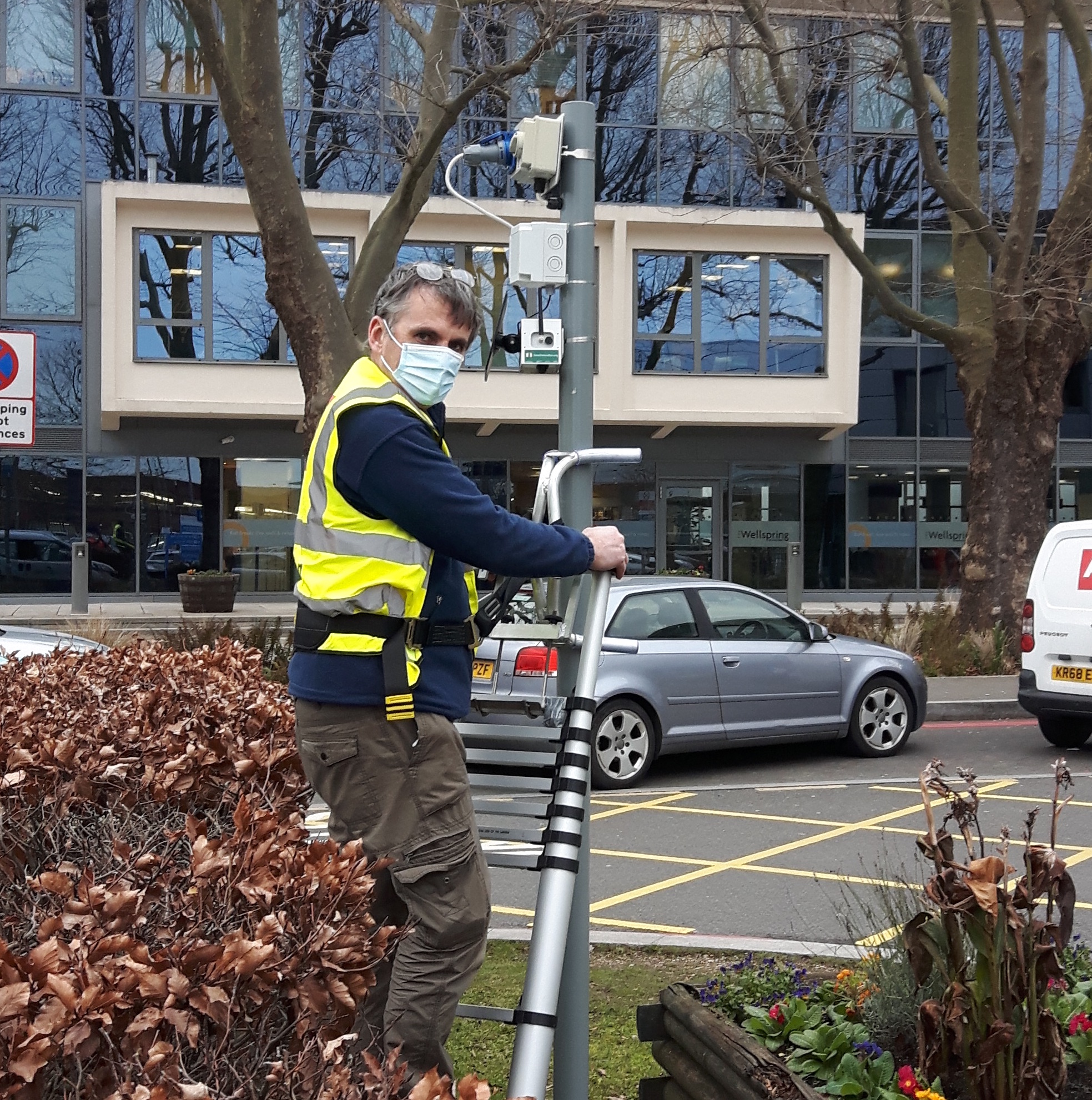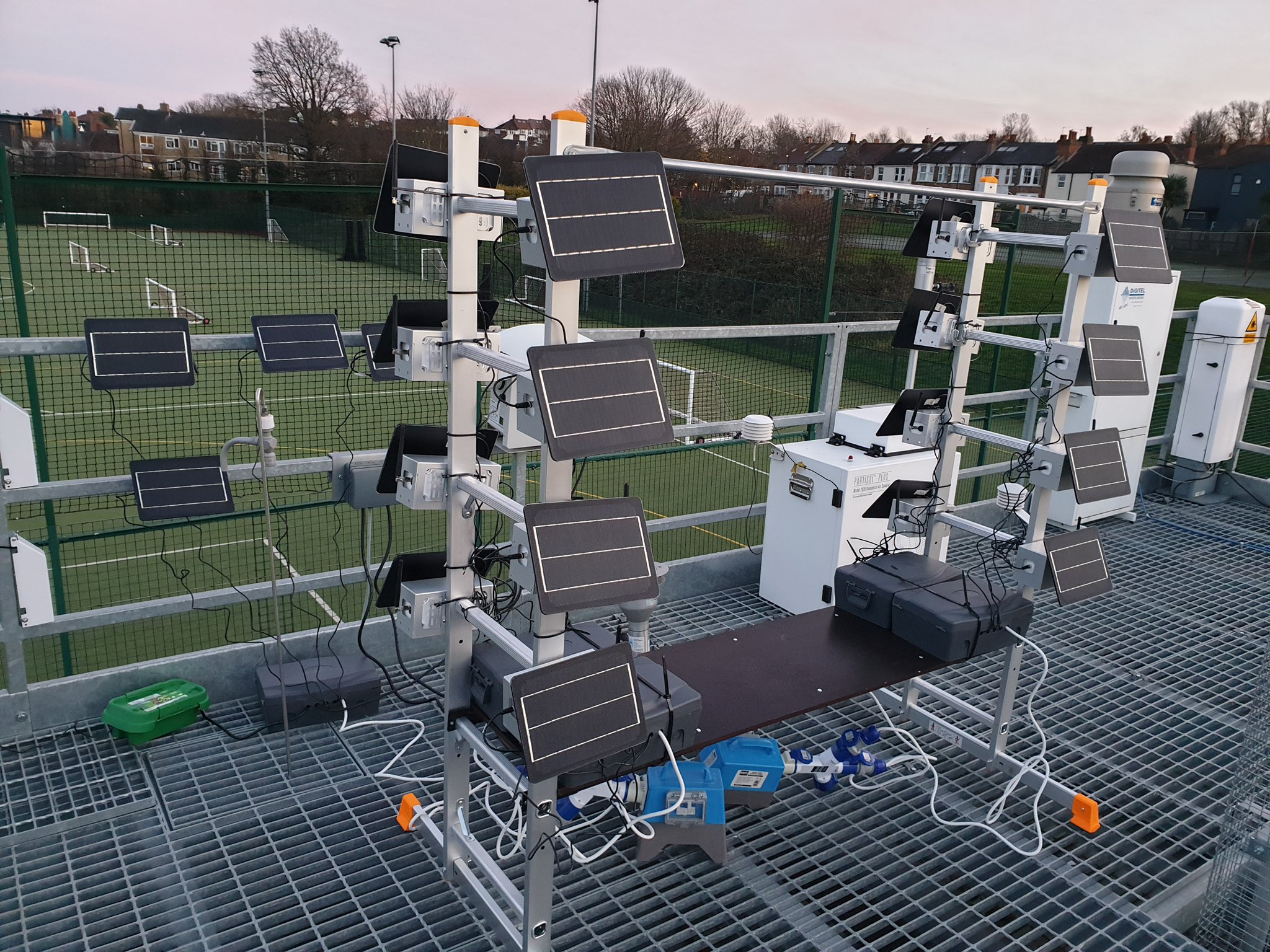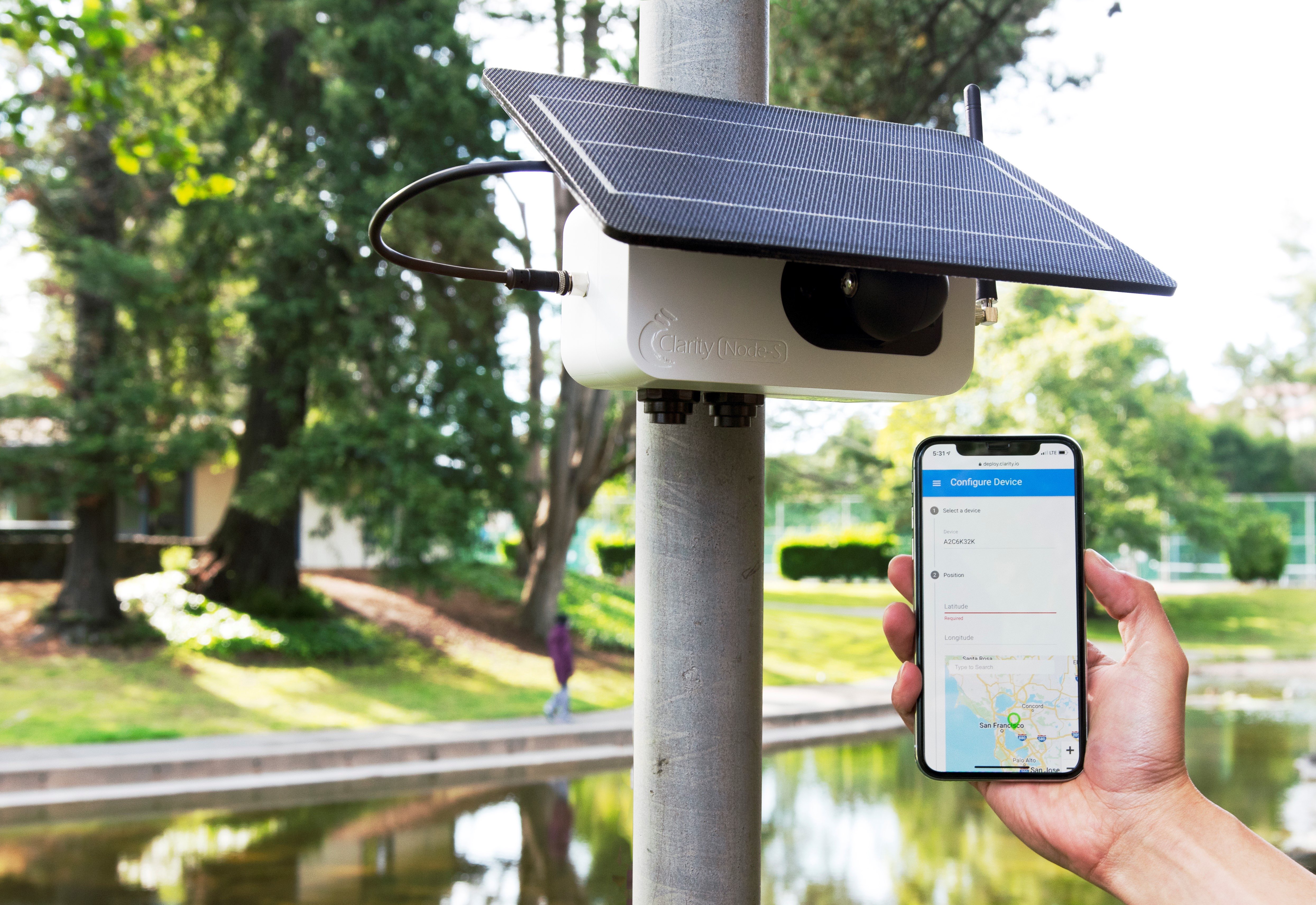Clarity Movement Co. Selected by Greater London Authority to Power New Air Quality Monitoring Network in the Fight Against Toxic Air
London air pollution sensor network, serving as a blueprint for how global governments, cities & communities can cost-effectively modernize air quality monitoring infrastructure
BERKELEY, Calif., Jan. 26, 2021 /PRNewswire-PRWeb/ -- Clarity Movement Co., a global sensing and data analytics company empowering the world to reduce air pollution, shared today that its air quality monitoring technology was selected to power the next phase of the Breathe London project. The selection comes through a partnership with Imperial College London, a pioneering university with a research arm specializing in air pollution that is responsible for managing the London Air Quality Network (LAQN), one of the densest and most advanced metropolitan monitoring networks in the world.
Deputy Mayor for Environment and Energy, Shirley Rodrigues said, "This is a major milestone for the Mayor's world-leading Breathe London sensor network. Giving Londoners the opportunity to see the levels of pollution in their local area will improve awareness and help people reduce their exposure. It will also help City Hall, TfL [Transport for London], and the boroughs better target efforts on improving air quality and contributing to a green recovery from the coronavirus pandemic. We hope the success of this scheme and its innovative use of clean technology will act as a blueprint for cities around the world to battle their own toxic air emergencies."
Clarity's technology will be used in the fight against London's toxic air, giving local communities access to affordable and reliable air quality data at scale. Initially, more than 100 low-cost air quality sensors will be installed at London hospitals, schools, and other sensitive locations to complement London's existing high-quality reference-grade monitors and to enable real-time measurement of ambient air pollution at the neighborhood level.
"Air pollution is often described as an invisible killer. To optimize solutions it is imperative local communities are empowered with actionable data in real-time," said Dr. Gary Fuller, air pollution scientist, Imperial College London. "The Breathe London project makes London the first city to holistically integrate low-cost sensors with existing air quality infrastructure. We are excited to be partnering with Clarity who will provide hardware and software to measure local air quality that is significantly lower cost and far easier to deploy than traditional equipment. A key strength of the Breathe London project will be at our new data centre, at White City in west London, where traditional and new lower-cost sensor data will be combined to provide Londoners with some of the highest-resolution air quality data in the world."
Breathe London is funded by the Mayor of London and supported by Bloomberg Philanthropies. Installation of the new network of Clarity air sensors will be completed in tranches starting in January 2021, with full deployment of the publicly-funded sensors expected by June 2021. The network will continue to expand through community funding initiatives, coordinated by Imperial College London.
"We are proud to partner with Breathe London to offer affordable air monitoring technology to London communities, and we are confident that this project represents a blueprint for governments across the globe who are working to pursue their own sustainability initiatives amidst rising air pollution and ongoing budget challenges," said Meiling Gao, COO, Clarity Movement Co. "Clarity can be the technology partner to help governments worldwide push forward despite budgetary constraints and deploy modern air quality monitoring networks that serve and empower the local community."
Air Quality Monitoring 2.0: The Future of Air Quality Monitoring Networks
In the United States, the legacy infrastructure traditionally used to measure and manage air quality is timeworn and costly to maintain. The U.S. Government Accountability Office (GAO), for example, released a report in December 2020 highlighting that US air pollution monitoring networks have fallen into disrepair due to aging equipment and budgetary constraints.
The U.S. isn't the only country challenged to maintain funding for air quality monitoring infrastructure - government-funded air pollution initiatives are chronically underfunded globally. Grants from multilateral agencies, such as the World Bank and the United Nations Development Programme, remain critical to building air quality monitoring efforts in the many countries where no funding exists. As government agencies across the world face budget cuts due to the economic impacts of COVID-19 in the coming years, air quality leaders will need to find ways to stretch their monitoring budgets.
"Air pollution and climate change conditions are reaching criticality worldwide at the same time that environmental agencies face budget constraints, and traditional air sensing technologies have reached a crossroads," Gao also said. "Given the current conditions, we believe that the future of air quality monitoring networks, Air Quality Monitoring 2.0, will consist of installing low-cost and highly-scalable sensors to complement existing regulatory monitoring equipment and fill in the spatial and temporal gaps that exist with the traditional networks. These technologically advanced sensors are significantly less expensive than traditional technologies and will be key to making air quality monitoring globally accessible by removing the steep up-front and operational costs that come with traditional monitoring networks."
Helping governments in more than 85 cities across more than 50 countries adopt Air Quality Monitoring 2.0, Clarity offers a reliable, low-cost air quality management solution that is purpose-built to complement existing regulatory monitoring networks. Solar-powered and weatherproof, the Clarity Node-S weighs just 1.2 kg and measures air pollutants like fine particulate matter and nitrogen dioxide. Clarity's monitors can be easily deployed in 10 minutes or less and link to the cloud through native cellular connectivity, allowing them to operate seamlessly with minimal maintenance in any environmental condition.
Once installed, customers have direct access to the data collected through API access and the Clarity Dashboard, an intuitive software platform that visualizes and integrates data from existing reference stations and includes advanced features like colocation analysis. The company upholds the highest standards for data and security and ensures that customers retain ownership of all data collected by their Clarity network. Clarity's sensing-as-a-service model includes a hardware warranty and access to a dedicated customer success team of air quality experts for project and technical support.
To support other cities and government agencies looking to leverage low-cost sensors to expand air quality monitoring coverage in the face of budget cuts, Clarity released a playbook titled "Maximize Your Air Quality Budget in a Post-COVID World: A Guide to Leveraging Low-cost Sensors for Air Quality Monitoring 2.0". To download the playbook, visit Clarity's website.
About Clarity Movement Co.
Clarity Movement Co. was founded in 2014 to empower the world to reduce air pollution. The Clarity team leverages expertise in air sensing technology, IoT devices, and data analytics to provide the most reliable low-cost hardware and software air quality monitoring solution available on the market. Clarity's air quality sensing-as-a-service solution revolutionizes the way governments, businesses, and communities understand and respond to air pollution, and currently provides local, accurate, and scalable air quality monitoring to more than 85 cities across 50+ countries. For more information, please visit clarity.io or follow us on Facebook, YouTube, Twitter, and LinkedIn.
About Imperial College of London
Imperial College London is one of the world's leading universities. The College's 17,000 students and 8,000 staff are expanding the frontiers of knowledge in science, medicine, engineering and business, and translating their discoveries into benefits for our society. Imperial is the UK's most international university, according to Times Higher Education, with academic ties to more than 150 countries. Reuters named the College as the UK's most innovative university because of its exceptional entrepreneurial culture and ties to industry.
The Environmental Research Group, part of Imperial's School of Public Health, is a leading provider of air quality information and research in the UK, combining air pollution science, toxicology and epidemiology to determine the impacts of air pollution on health and the causal factors.
About Greater London Authority
The Greater London Authority (GLA) is the strategic authority for London and includes the Mayor of London's office. Under the Greater London Authority Act 1999 the elected Mayor of London has legal responsibility for preparing an Air Quality Strategy for London and leads on the implementation of measures in the city to tackle pollution emissions, reduce exposure, raise awareness and integrate air quality and public health. Further background on what the GLA does can be found on the GLA website here: https://www.london.gov.uk/about-us/how-we-work-london
Media Contact
Christina Dela Cruz, ARPR on behalf of Clarity, 8553008209, [email protected]
SOURCE ARPR on behalf of Clarity




Share this article